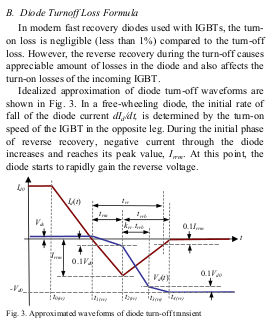Navigation
Install the app
How to install the app on iOS
Follow along with the video below to see how to install our site as a web app on your home screen.
Note: This feature may not be available in some browsers.
More options
Style variation
-
Congratulations cowski on being selected by the Eng-Tips community for having the most helpful posts in the forums last week. Way to Go!
You are using an out of date browser. It may not display this or other websites correctly.
You should upgrade or use an alternative browser.
You should upgrade or use an alternative browser.
Pure sine wave inverter 1
- Thread starter Jk1996
- Start date
- Status
- Not open for further replies.
-
1
- #2
Losses everywhere.
The wire to the inverter from the DC source.
The wire from the external terminals to the power stage in the inverter.
The power semiconductors when they're ON.
The power semiconductors when they're switching.
The transformer.
The entire control stage.
The cooling fan(s).
A pure sine-wave inverter switches far more often than a modified-sine-wave inverter and so has more internal losses. However those more efficient modified-sine-wave style inverters can have the loads running much more inefficiently so the system efficiency could be much worse with modified-sine-wave than a sine-wave version plus some loads will not work with a modified-sine-wave style output.
You can not calculate the efficiency of an inverter. Do not waste your time. All you can do is measure the efficiency.
Keith Cress
kcress -
The wire to the inverter from the DC source.
The wire from the external terminals to the power stage in the inverter.
The power semiconductors when they're ON.
The power semiconductors when they're switching.
The transformer.
The entire control stage.
The cooling fan(s).
A pure sine-wave inverter switches far more often than a modified-sine-wave inverter and so has more internal losses. However those more efficient modified-sine-wave style inverters can have the loads running much more inefficiently so the system efficiency could be much worse with modified-sine-wave than a sine-wave version plus some loads will not work with a modified-sine-wave style output.
You can not calculate the efficiency of an inverter. Do not waste your time. All you can do is measure the efficiency.
Keith Cress
kcress -
Switching losses are one area that has improved significantly as power solid state devices have become faster. The attachment is a rather technical piece on the subject.

I completely agree with Keith on the superiority of a measured efficiency value.

I completely agree with Keith on the superiority of a measured efficiency value.
electricuwe
Electrical
I can only partially agree with Keith, for two reasons:
- measurements can only reveal the integral losses when the design is ready, but for thermal design you need the losses per component at an early stage to size heatsink and fan. If you do this bottom, the result is quite good. Overall formulas trying an integral approach without a sound background in physics tend to be misleading. Even standardizing this methods doesn't help.
- with WBG devices efficiency can easily go up to 99% for the inverter. For large drive systems up to 95% for the total system. Determining losses by calculating the difference between input and output hence is prone to significant errors by substracting two large quantities
Nevertheless the measurement is important, as the proof is in the pudding. Sometimes efficiency is subject to penalties if the quoted performance has not been achieved. Not on small units, but on multi-MW systems.
On the initial question: there several different systems marketed as "pure sinewave inverter". So without knowing details, it is difficult to tell.
- measurements can only reveal the integral losses when the design is ready, but for thermal design you need the losses per component at an early stage to size heatsink and fan. If you do this bottom, the result is quite good. Overall formulas trying an integral approach without a sound background in physics tend to be misleading. Even standardizing this methods doesn't help.
- with WBG devices efficiency can easily go up to 99% for the inverter. For large drive systems up to 95% for the total system. Determining losses by calculating the difference between input and output hence is prone to significant errors by substracting two large quantities
Nevertheless the measurement is important, as the proof is in the pudding. Sometimes efficiency is subject to penalties if the quoted performance has not been achieved. Not on small units, but on multi-MW systems.
On the initial question: there several different systems marketed as "pure sinewave inverter". So without knowing details, it is difficult to tell.
- Thread starter
- #5
Cost! Every single thing that improves efficiency increases the manufacturing cost.
Bigger wire = more money
Lower ON resistance semiconductors = more money
etc etc
Keith Cress
kcress -
Bigger wire = more money
Lower ON resistance semiconductors = more money
etc etc
Keith Cress
kcress -
electricuwe
Electrical
I agree to Keith, but there is one other important factor not related to material:
Better engineering = more money
Better engineering = more money
Are pure-sine-wave inverters ALWAYS less efficient ? I am particularly interested in low or zero load efficiency. I suspect that, living off-grid, that I need a low-power PSW one for loads that need it or require it to be on all the time, and a heavier, NSW(non sine wave) one for occasional heavy loads such as power tools. I already know that many soft-start controllers don't like NSW
- Status
- Not open for further replies.
Similar threads
- Locked
- Question
- Replies
- 13
- Views
- 1K
- Locked
- Question
- Replies
- 0
- Views
- 606
- Question
- Replies
- 3
- Views
- 14K
- Replies
- 2
- Views
- 3K
